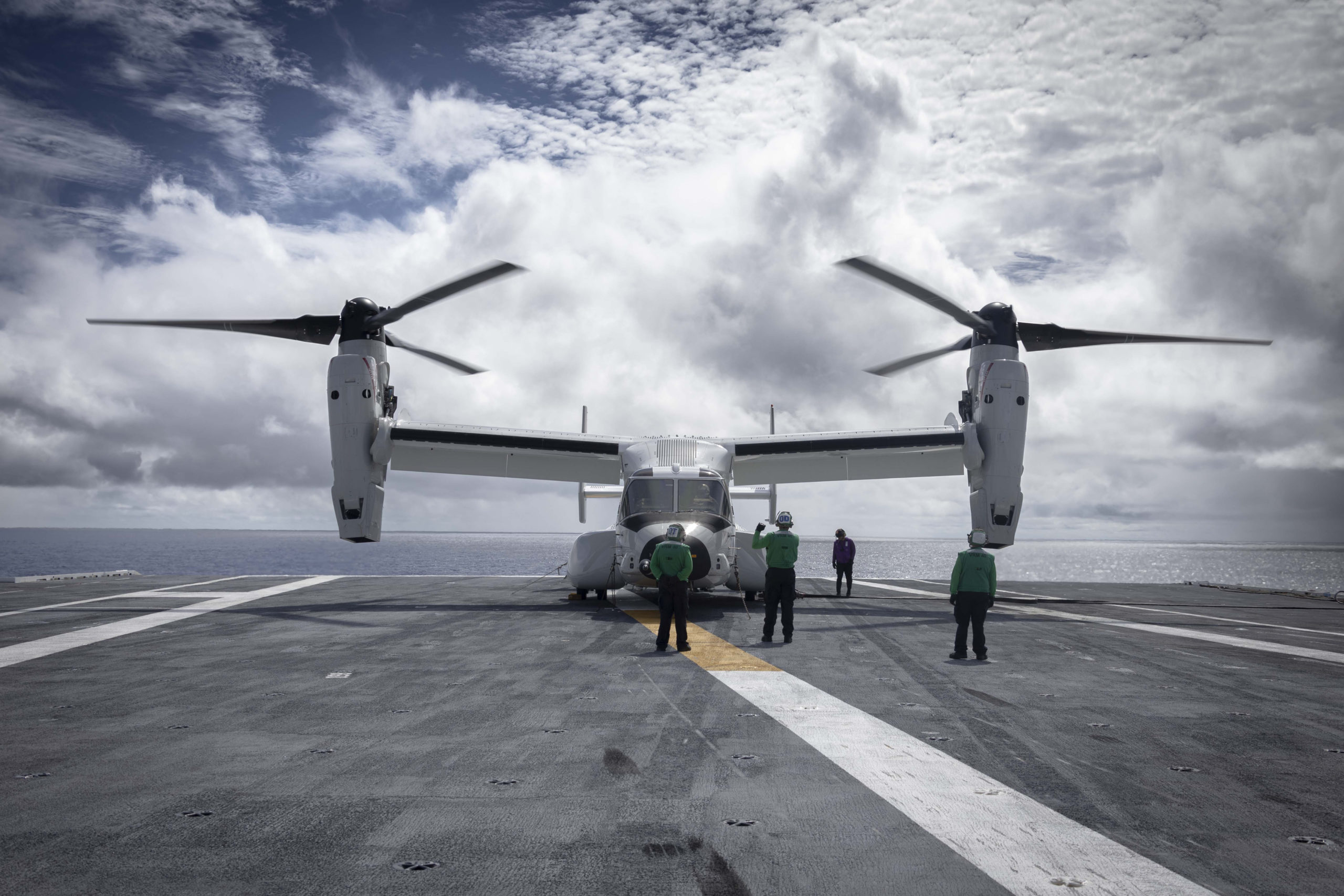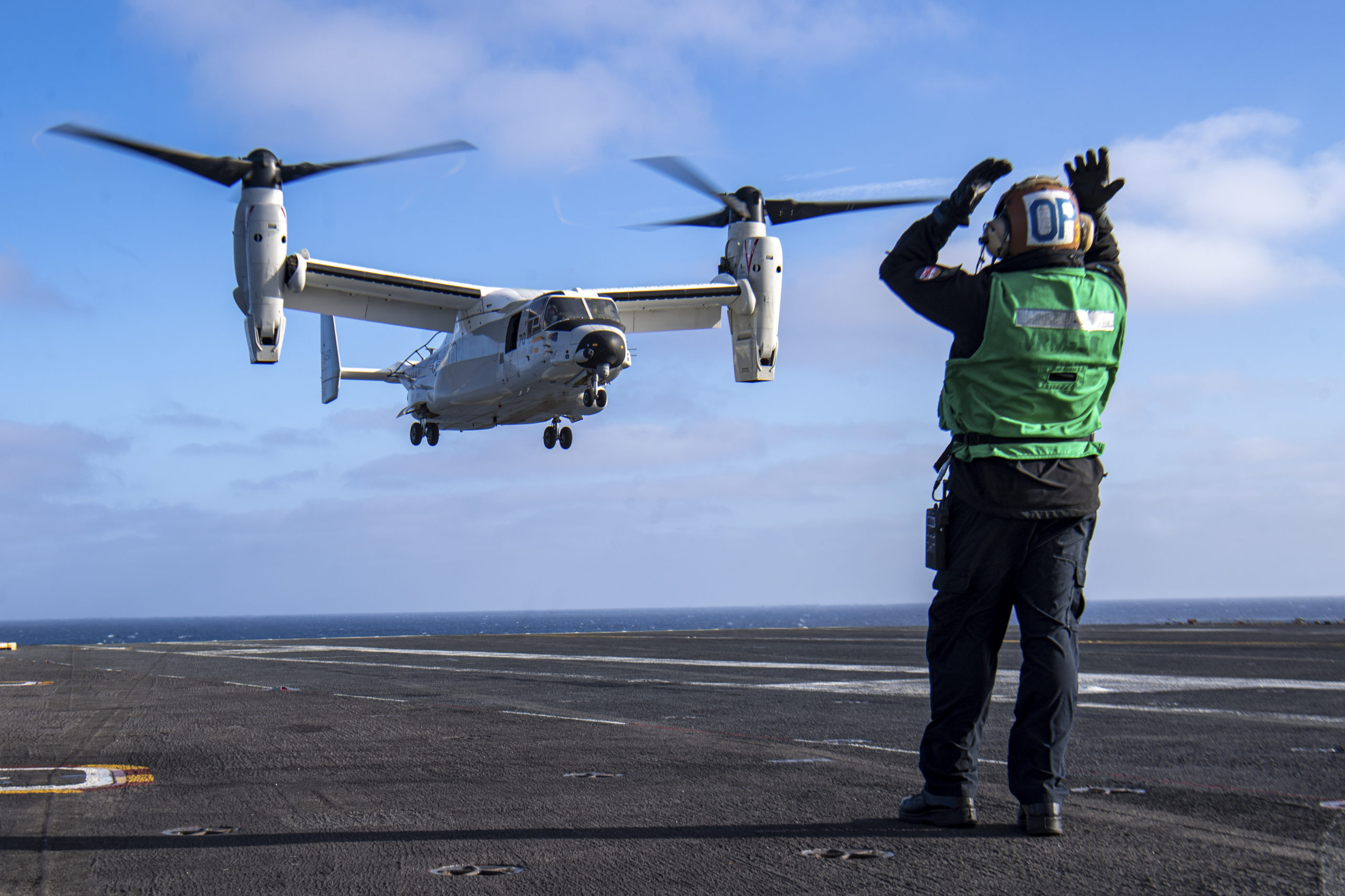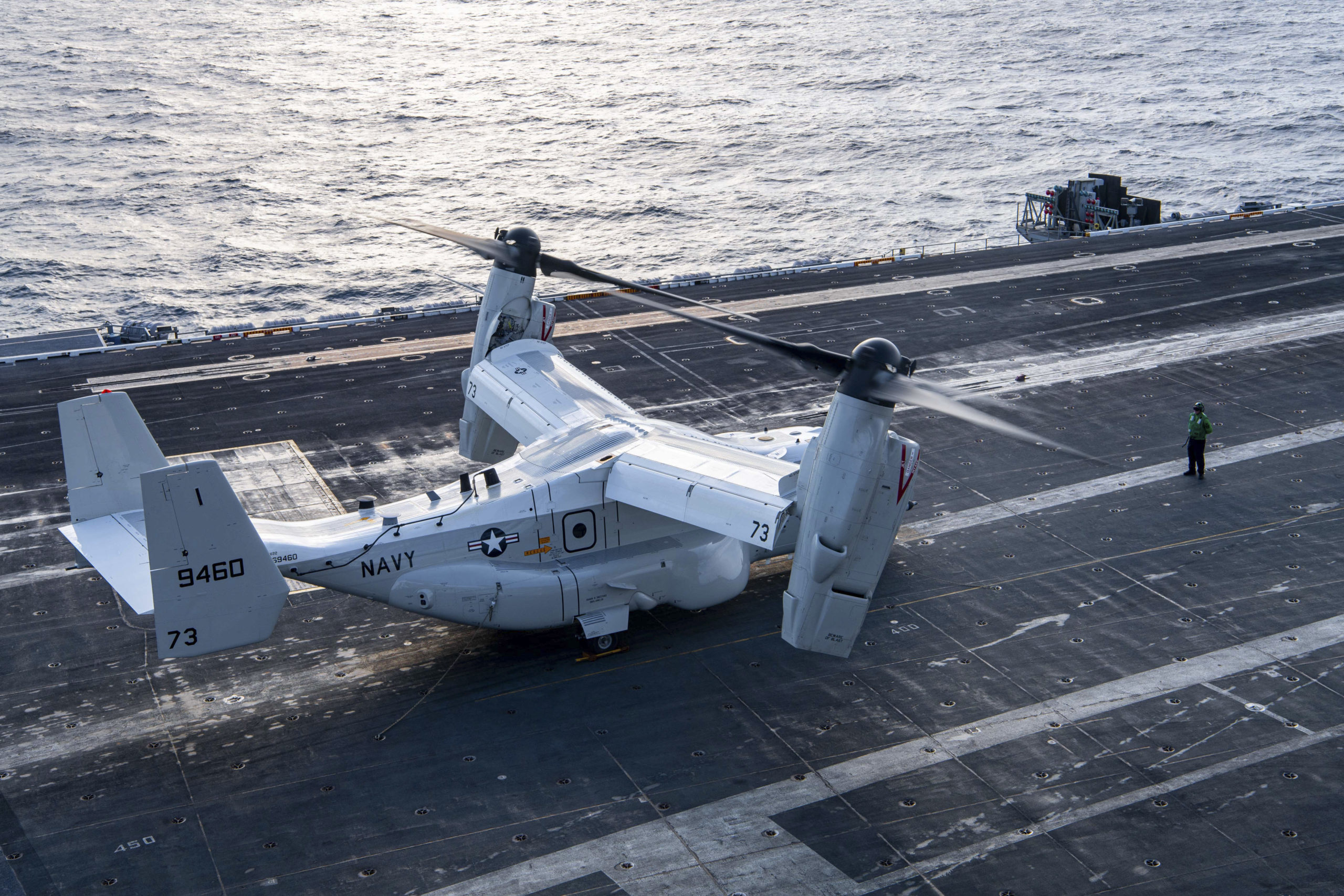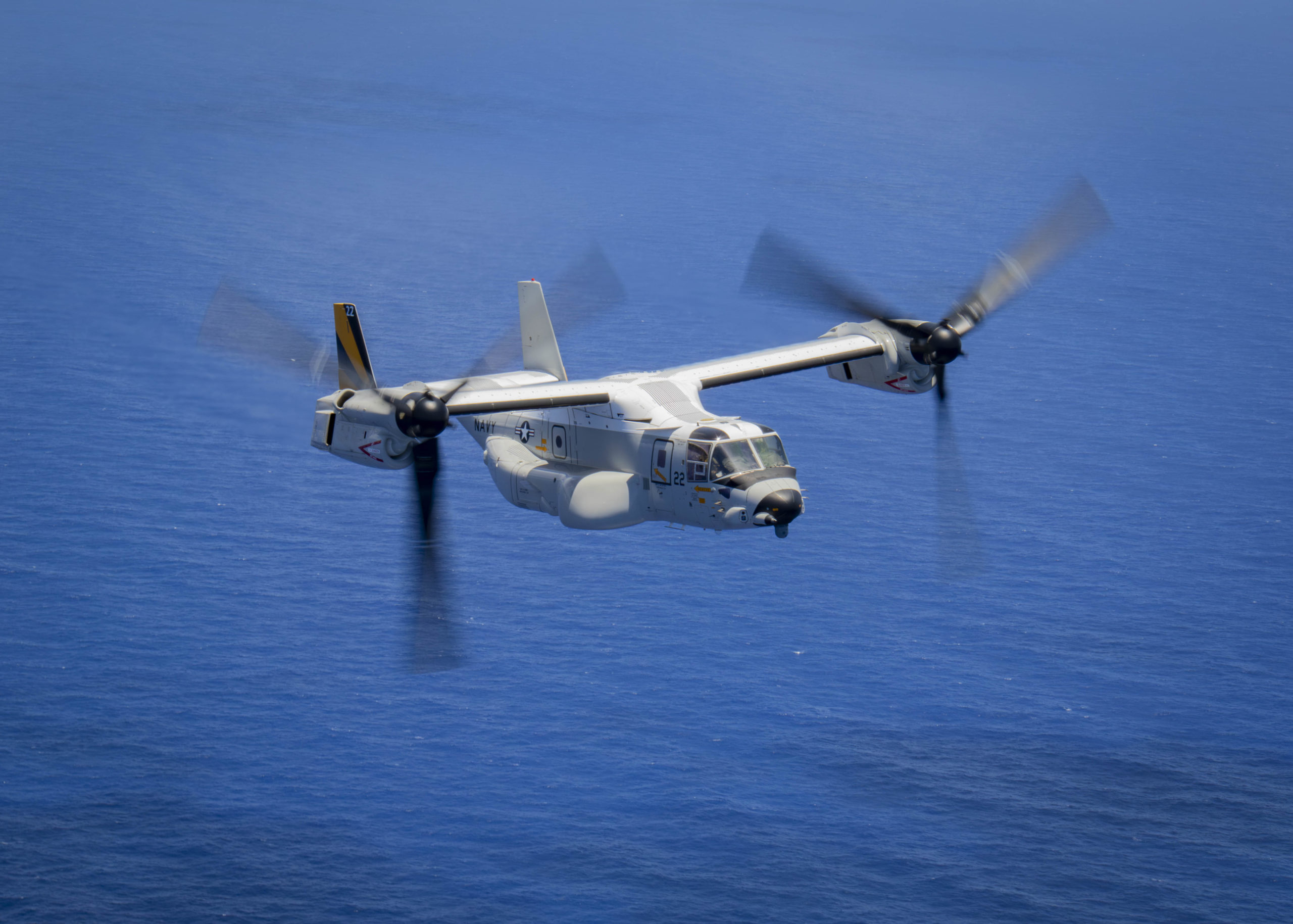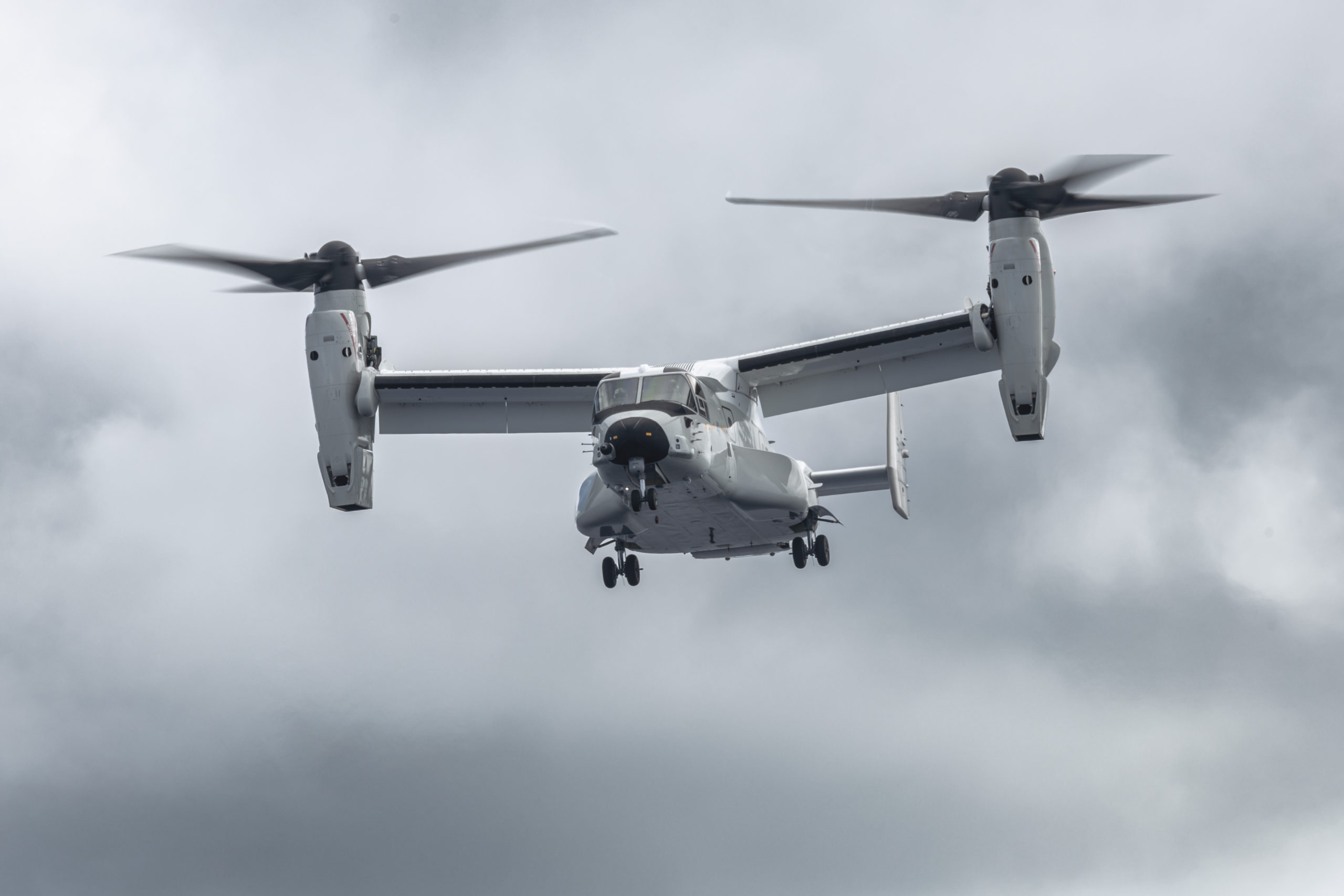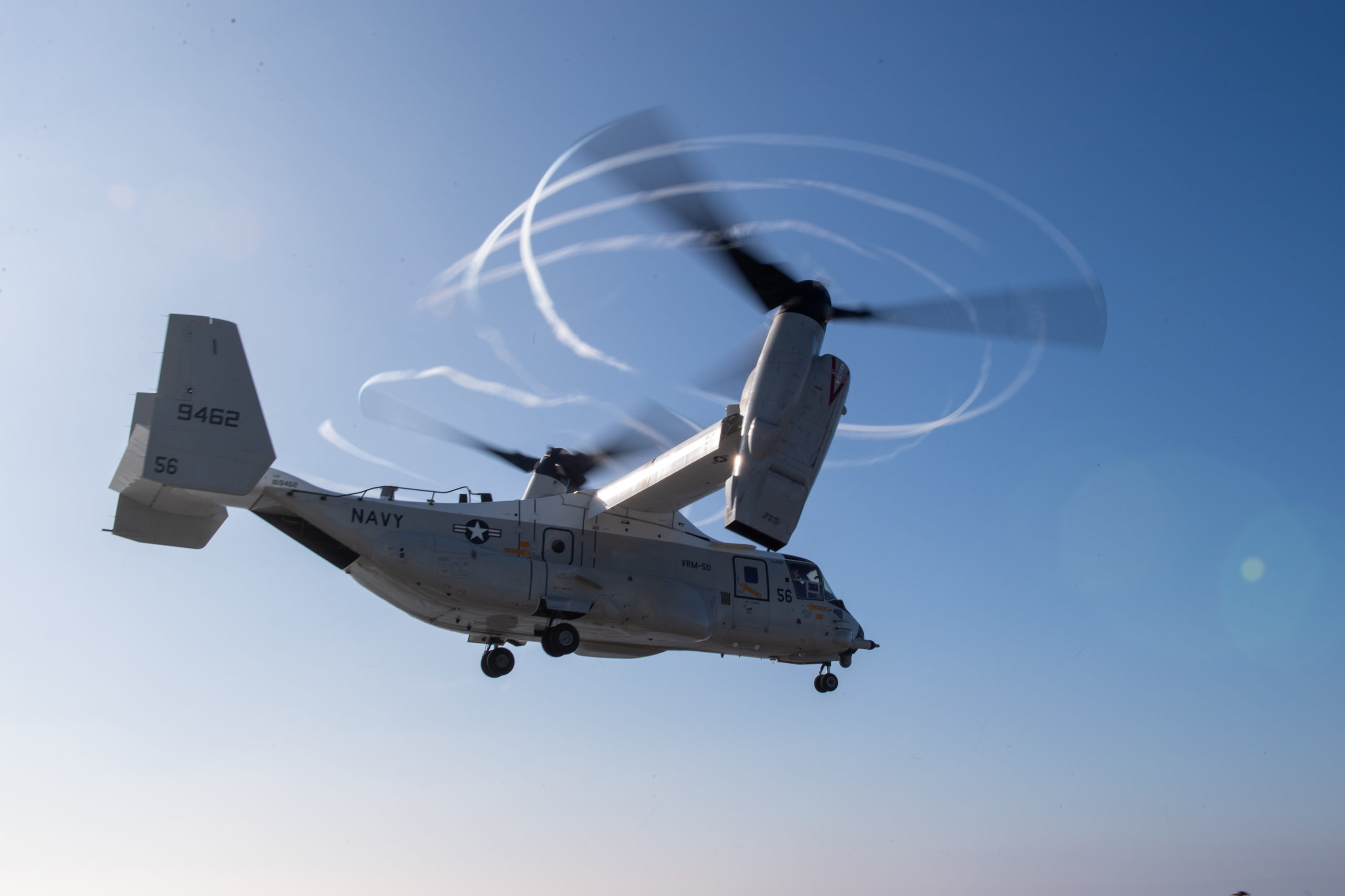By CAPT (Ret) Christoper C. Misner, Senior Manager, Bell Strategic Pursuits
The U.S. National Defense Strategy prioritizes the Indo-Pacific as a critical theater for national security. Yet, the current U.S. Navy fleet would likely struggle to meet the logistical demands of the Joint Force across the vast maritime distances involved in prolonged combat operations within this area.
One reason is that the U.S. Department of Defense’s approved and funded procurement programs do not meet the demand for airborne logistics in maritime combat. This creates a significant gap in the Navy’s ability to support Distributed Maritime Operations (DMO) and Expeditionary Advanced Based Operations (EABO).
The Navy must ensure it has the logistics capability to support the growing number of deployed naval and air forces operating from sea and shore-based hubs. This will not only ensure the Navy meets immediate and long-term needs but also strengthen the U.S. defense industrial base.
The U.S. Navy has historically projected power through carrier strike groups, concentrating firepower on a few assets, typically including an aircraft carrier, destroyers, frigates, and submarines. While powerful, this offensive operation model enables adversaries to anticipate U.S. naval movements, limits sailors’ ability to respond to threats across long distances, and exposes fleets to anti-access/anti-denial (A2/D2) threats.
As a result, the U.S. Navy is shifting from large, centralized carrier strike groups to distributed maritime operations, which disperse naval units over a larger area to complicate enemy targeting. This shift requires not only advanced combat capabilities but also flexible logistics support.
The CMV-22B Osprey – a tiltrotor aircraft – is at the heart of this transformation in the Navy’s approach. The CMV-22B offers superior range, avionics, and communications compared to the C-2A, its predecessor.
Although it was initially conceived as a carrier-onboard-delivery (COD) replacement, the Osprey is not confined to large-deck carrier logistics. The CMV-22B can conduct long-range navigation and deliver logistical support across entire fleets, an advantage in distributed maritime environments where logistics needs span vast areas and diverse units.
Carrier strike group operations today can cover over 700 miles in 24 hours. The CMV-22B ensures logistics support matches this pace, crucial for distributed maritime operations in contested environments. The aircraft can rapidly transport personnel, munitions, medical supplies, and components to Expeditionary Advanced Bases, Forward Logistic Support Sites, and ships at sea.
The CMV-22B also allows the U.S. military to lead joint combat operations, integrating capabilities across service branches. It assists the convergence of the U.S. Navy’s distributed operations with the Air Force’s agile combat employment and the Marine Corps’ Expeditionary Advanced Base Operations (EABO). The aircraft’s speed, range, and versatility ensure the Navy operates effectively as part of a modular force comprising air and ground elements.
The Osprey – used by the Navy, Air Force Special Operations Command, and Marine Corps – has evolved over time to meet the needs of our warfighters. Looking ahead, the CMV-22B presents opportunities beyond its primary logistics role. The Navy could leverage its versatility to support the Carrier Strike Group with aerial refueling capability. Its enhanced secure, long-range communication could better support Naval Special Warfare (NSW) forces in combat search and rescue (CSAR) and other NSW missions. These and other improvements would expand its strategic value to the U.S. Navy fleet and Joint Force.
Furthermore, procuring the CMV-22B and investing in its readiness and modernization are not only necessary to meet operational needs, but also to sustain and strengthen the U.S. defense industrial base. Team Osprey, a consortium of over 500 manufacturers and suppliers spanning nearly every U.S. state, supports jobs producing thousands of essential parts for the Osprey. This industrial base is vital to maintain American military and economic strength.
U.S. naval capabilities may not reach their full potential without a fast, long-range tiltrotor aircraft like the CMV-22B. Indeed, its ability to support both Fleet and Joint Force operations while enhancing combat capabilities makes it a key asset against emerging threats in contested environments.
The CMV-22’s speed and range are critical as the Navy adapts to distributed maritime operations and develops tactics, techniques, and procedures to meet future threats.
Featured photo: ATLANTIC OCEAN (Sept. 19, 2024) Ð A CMV-22B Osprey, assigned to the “Mighty Bison” of Fleet Logistics Multi-Mission Squadron (VRM) 40, lands on the flight deck of the world’s largest aircraft carrier, USS Gerald R. Ford (CVN 78), Sept. 19, 2024. These carrier landing qualifications are a first for the CMV-22B Osprey on a Ford-class aircraft carrier. USS Gerald R. Ford is underway in the Atlantic Ocean to further develop core unit capabilities during its basic phase of the optimized fleet response plan. (U.S. Navy photo by Mass Communication Specialist 2nd Class Maxwell Orlosky).
This article was first published by Seapower Magazine and is republished with the author’s permission.
And for the first of two books, we are publishing this year on the tiltrotor enterprise, see the following:
Later this year, we are publishing a companion volume to the one available now.


